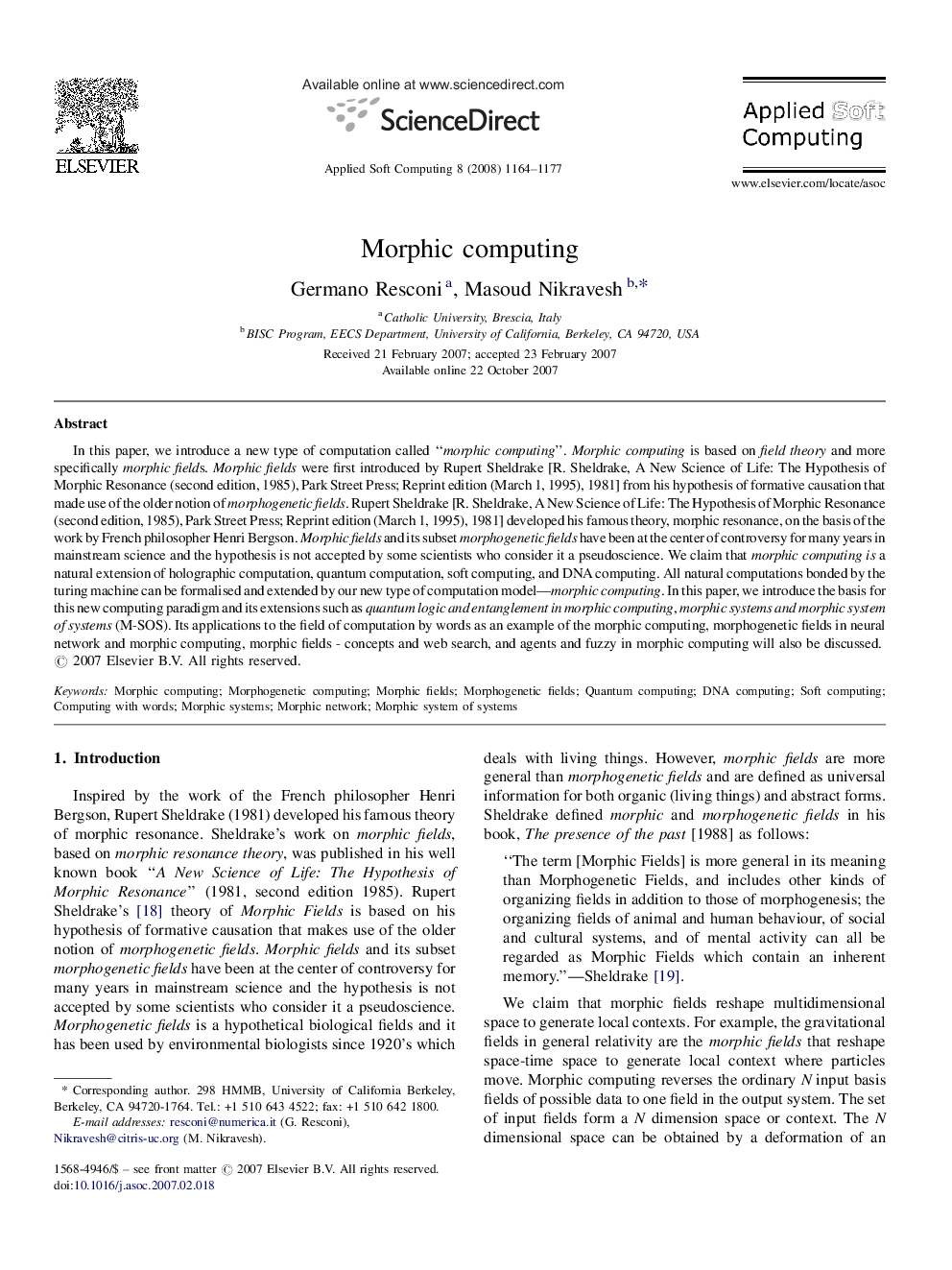| کد مقاله | کد نشریه | سال انتشار | مقاله انگلیسی | نسخه تمام متن |
|---|---|---|---|---|
| 496080 | 862849 | 2008 | 14 صفحه PDF | دانلود رایگان |

In this paper, we introduce a new type of computation called “morphic computing”. Morphic computing is based on field theory and more specifically morphic fields. Morphic fields were first introduced by Rupert Sheldrake [R. Sheldrake, A New Science of Life: The Hypothesis of Morphic Resonance (second edition, 1985), Park Street Press; Reprint edition (March 1, 1995), 1981] from his hypothesis of formative causation that made use of the older notion of morphogenetic fields. Rupert Sheldrake [R. Sheldrake, A New Science of Life: The Hypothesis of Morphic Resonance (second edition, 1985), Park Street Press; Reprint edition (March 1, 1995), 1981] developed his famous theory, morphic resonance, on the basis of the work by French philosopher Henri Bergson. Morphic fields and its subset morphogenetic fields have been at the center of controversy for many years in mainstream science and the hypothesis is not accepted by some scientists who consider it a pseudoscience. We claim that morphic computing is a natural extension of holographic computation, quantum computation, soft computing, and DNA computing. All natural computations bonded by the turing machine can be formalised and extended by our new type of computation model—morphic computing. In this paper, we introduce the basis for this new computing paradigm and its extensions such as quantum logic and entanglement in morphic computing, morphic systems and morphic system of systems (M-SOS). Its applications to the field of computation by words as an example of the morphic computing, morphogenetic fields in neural network and morphic computing, morphic fields - concepts and web search, and agents and fuzzy in morphic computing will also be discussed.
Journal: Applied Soft Computing - Volume 8, Issue 3, June 2008, Pages 1164–1177